Fluid Friction Apparatus
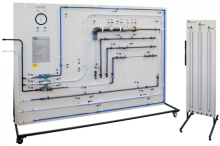
A floor standing apparatus to allow students to investigate the phenomena of laminar, transitional and turbulent flows in pipe systems.
For use by all kinds of engineering students, the Flow Meter Calibration apparatus compares and shows the accuracy and use of fundamental flow meters.
The nozzle flow meter (included) or any of the optional flow meters quickly and easily fit into place between the adaptors in the base unit of the apparatus. Four water-filled manometers show the pressure differences at the flow meter and across the overall flow meter assembly. The manometers have a common manifold fitted with an air valve. Students use the hand pump (included) to increase the air pressure in the manifold. This ‘offsets’ the manometer measurement (adjusts the datum).
The straight pipe (included) gives a comparison of the true pressure losses caused by the flow meters.
The optional Pitot Tube Flow Meter (H40A) will also show the velocity profile in a pipe. This helps to explain the ‘boundary layer’ and surface friction in pipes and flow channels.
For use with TecQuipment's H40 Flow Meter Calibration unit.
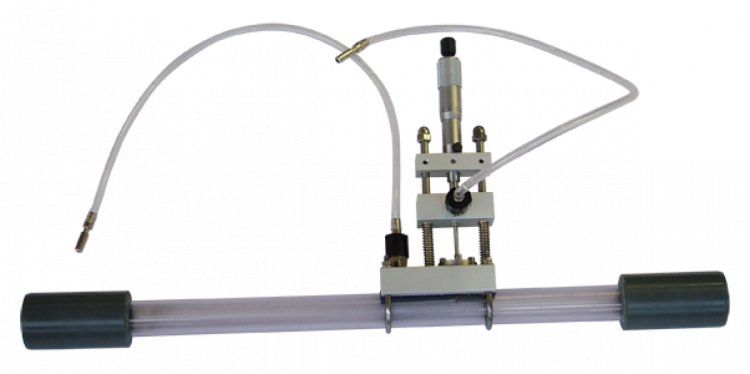
A popular flow meter for use with TecQuipment’s Flow Meter Calibration unit (H40). It shows the accuracy and use of a Pitot tube flow meter.
This flow meter quickly and easily fits into place between the adaptors in the base unit of the Flow Meter Calibration unit. The manometers of the calibration unit show the pressure differences at the flow meter and across the overall flow meter assembly.
A precision micrometer head allows the user to accurately adjust the position of the Pitot tip that traverses across the inside of the pipe. The tip measures the change in pressure across the pipe for a given flow rate. A second tapping in the pipe wall measures the ‘static’ pressure. Plots of these pressures show the velocity profile in a pipe and explains the ‘boundary layer’ and surface friction in pipes and flow channels.
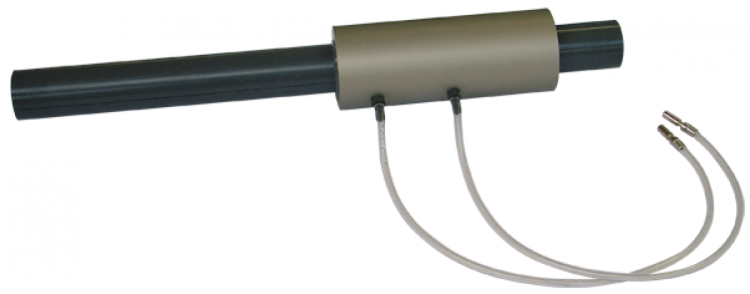
A popular flow meter for use with TecQuipment’s Flow Meter Calibration unit (H40). It shows the accuracy and use of a venturi flow meter.
This flow meter quickly and easily fits into place between the adaptors in the base unit of the Flow Meter Calibration unit. The manometers of the calibration unit show the pressure differences at the flow meter and across the overall flow meter assembly.
A venturi made to ISO (International Standards Organisation) standards allows the user to measure pressures before and after a constriction for a given rate of flow. The venturi shows how standard textbook equations allow you to accurately calculate flow from these pressures, due to the specific design of the venturi.

A popular flow meter for use with TecQuipment’s Flow Meter Calibration unit (H40). It shows the accuracy and use of a sharp-edged orifice flow meter.
This flow meter quickly and easily fits into place between the adaptors in the base unit of the Flow Meter Calibration unit. The manometers of the calibration unit show the pressure differences at the flow meter and across the overall flow meter assembly.
A sharp-edged orifice made to ISO (International Standards Organisation) standards allows the user to measure pressures before and after an orifice for a given rate of flow. The orifice shows how standard textbook equations allow you to accurately calculate flow from these pressures, due to the specific design of the orifice.

A floor standing apparatus to allow students to investigate the phenomena of laminar, transitional and turbulent flows in pipe systems.
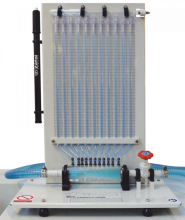
An educational Venturi tube that allows students to study the Venturi meter and Bernoulli's Theorem and to make direct comparisons between the results obtained by experimentation and those predicted by theory.
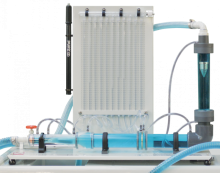
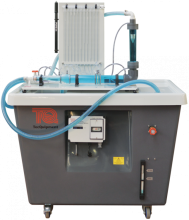
The TecQuipment Flow Measurement Methods (H10) investigates different ways of measuring flow including a Venturi meter, an orifice plate, and a rotameter. At the same time shows applications of the steady flow energy equation (Bernoulli's equation).
